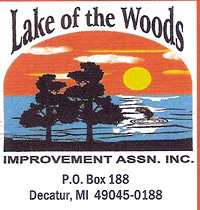Archives
July 2023
Categories |
Back to Blog
From Michigan Lakes and Stream Association March 8, 2018 Newsletter Submitted by Paul J. Sniadecki, ML&SA Board Director On going scientific study in the state of Minnesota has resulted in some key findings for the treatment of starry stonewart. The knowledge gained in Minnesota can be directly applied to the many lakes in Michigan with Aquatic Invasive Species (AIS) infestations of starry stonewort. A forthcoming 2018 paper from researchers and their collaborators at the Minnesota Aquatic Invasive Species Cooperative Research Center (MAISRC) at the University of Minnesota, will help inform starry stonewort management efforts for inland lakes. Researchers found that mechanical and algaecide treatments greatly reduced starry stonewort biomass, but that bulbils – small, star-shaped structures that can regenerate into new plants – remained viable after treatment. The project consisted of both field and lab work to evaluate the effects of mechanical and algaecide treatments on starry stonewort biomass, bulbil density, and bulbil viability. Researchers examined several areas of Koronis lake that had undergone different treatments, including a channel that was mechanically harvested, an area that was treated only with algaecide, and an area that was first mechanically harvested and then treated with algaecide. The results of each treatment were compared to an untreated reference area. This research was conducted in collaboration with the Koronis Lake Association and Blue Water Science, a lake management firm. Key findings included:
1. The algaecide (chelated copper) treatment on its own significantly reduced starry stonewort biomass, but failed to reduce bulbil density and the capacity of starry stonewort to regenerate via bulbils. 2. Combining the algaecide treatment with mechanical harvesting also significantly reduced starry stonewort biomass, and was associated with lower bulbil viability. These findings underscore that a multi-pronged approach to starry stonewort control that includes both chemical and mechanical management has potential to improve outcomes. Determining how to prevent the recovery of starry stonewort from bulbils that remained viable after treatment needs further investigation using scientific methods. Applied research on the efficacy of starry stonewort treatment options has been extremely limited; but MAISRC is filling a critical knowledge gap with this work. The paper will soon be published in Lake and Reservoir Management, An International Journal of the North American Lake Management Society This invasive alga has now been found in only eleven (11) Minnesota lakes (compared to the scores of lakes in Michigan) and can grow tall and dense, interfering with recreation and potentially displacing native species. To date, treatment options have been limited and the species has proven difficult to control. Since 2012, the Minnesota Legislature has appropriated significant funds to create the Minnesota Aquatic Invasive Species Cooperative Research Center (MAISRC) at the University of Minnesota, in collaboration with the Minnesota Commissioner of Natural Resources, MNDNR. (NOTE: Portions of this article originally appeared in the February 2018 Newsletter issued by MAISRC)
0 Comments
Read More
Leave a Reply. |
 RSS Feed
RSS Feed
